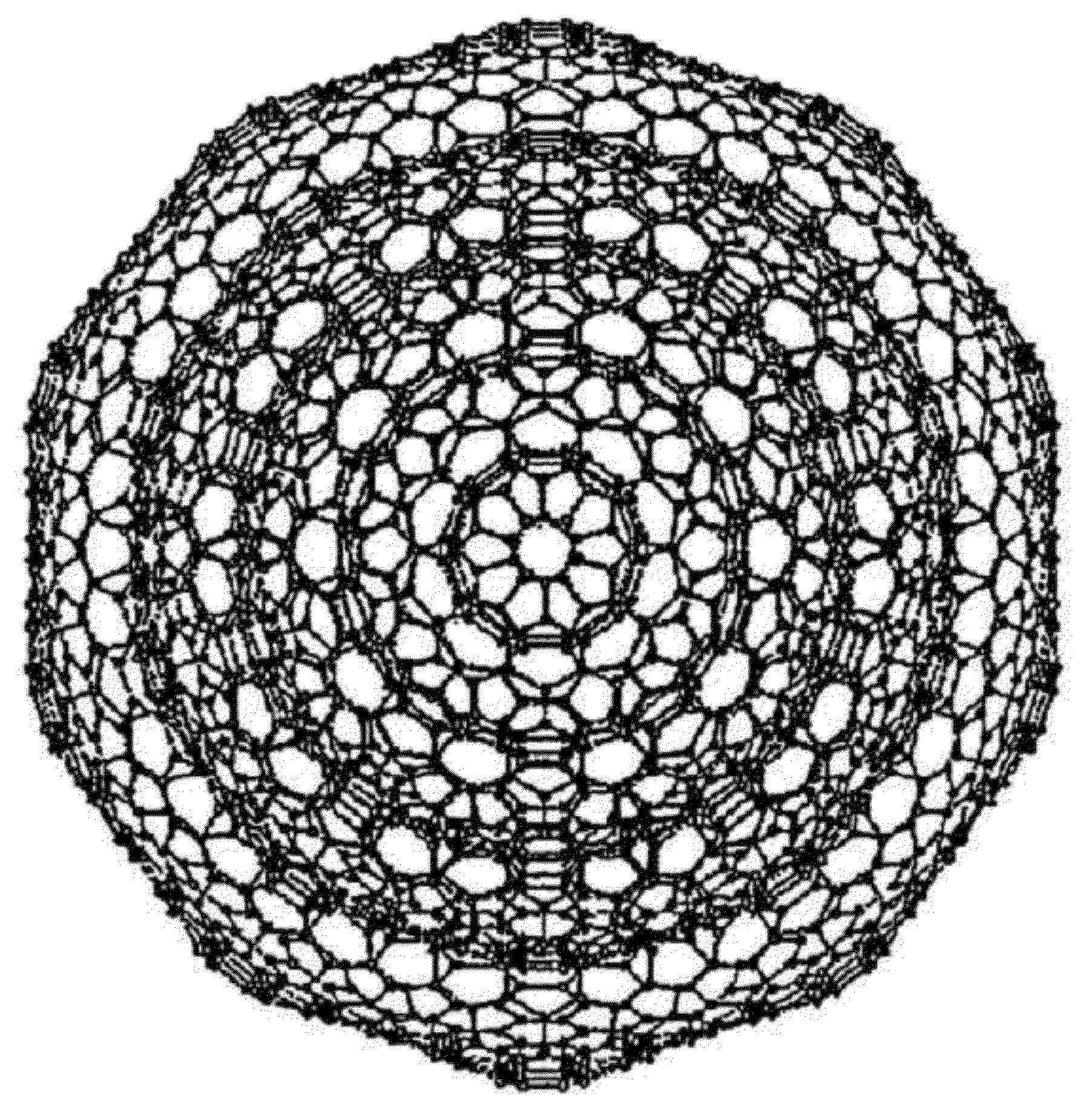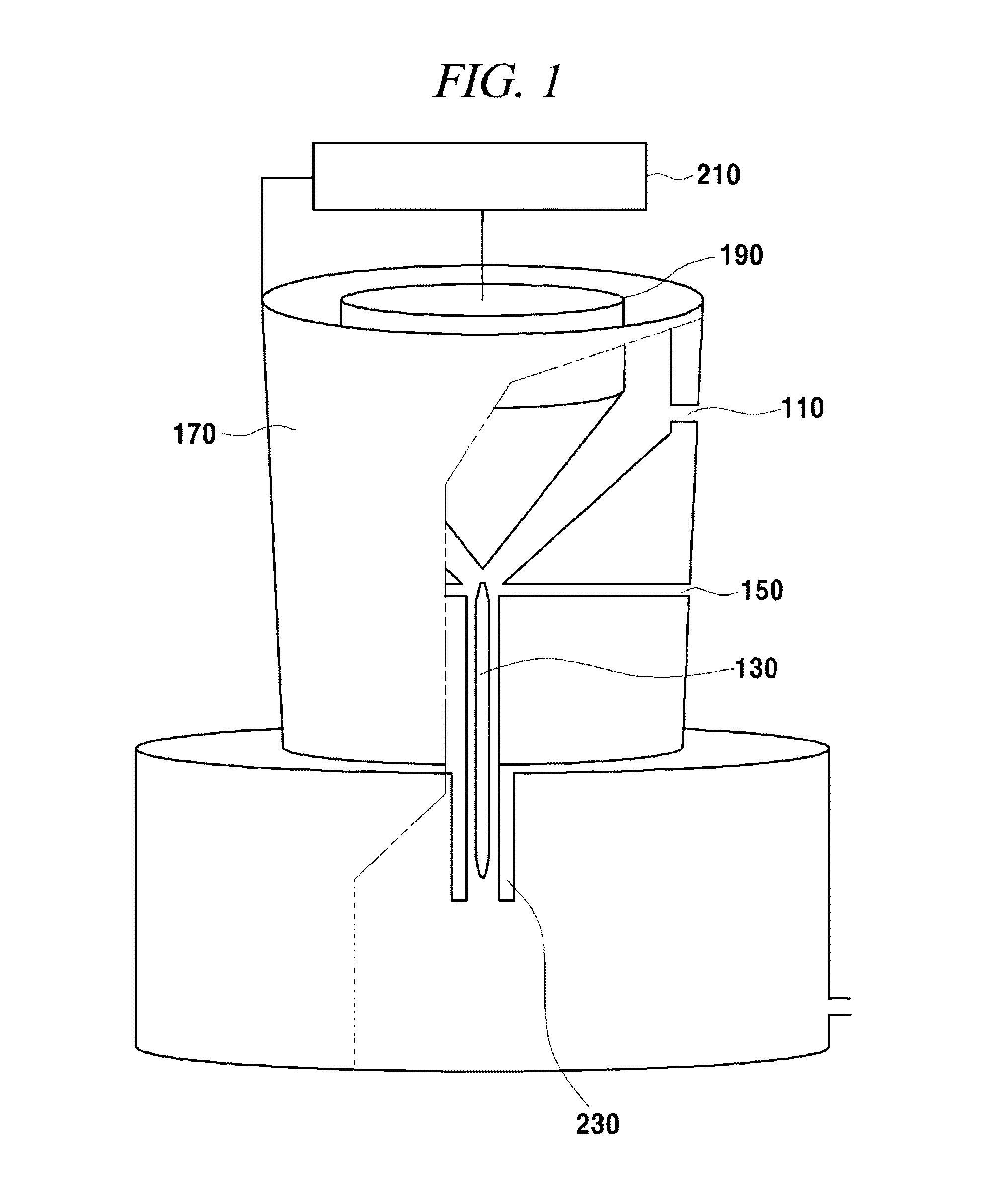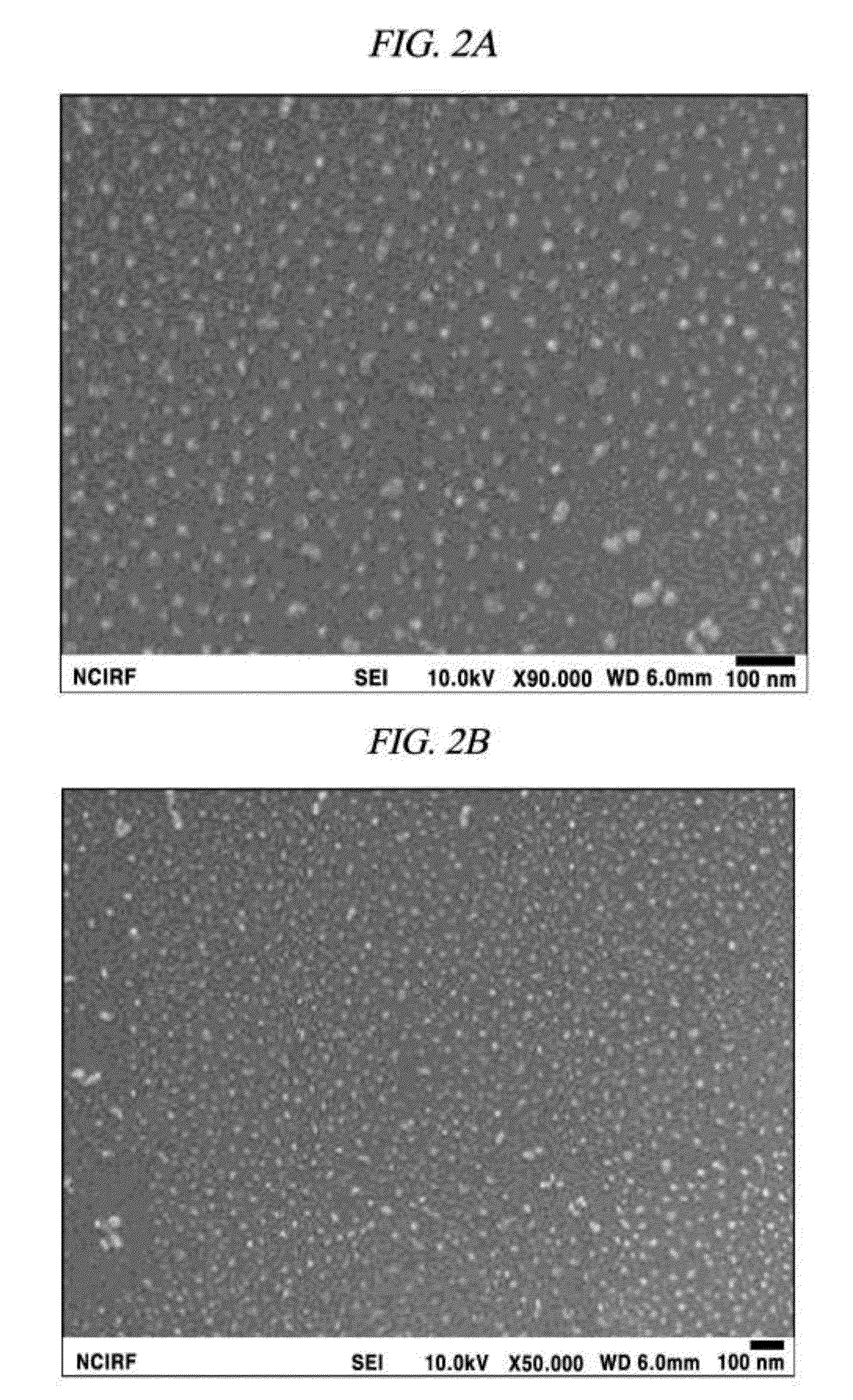Graphene quantum dots with different types and method for obtaining each of different types of graphene quantum dots
a graphene and quantum dots technology, applied in the field of graphene quantum dots with different types and methods for obtaining each of different types can solve the problems of reducing the electronic and optoelectronic properties of graphene, limiting the large-scale and almost impossible to use it for device applications. , to achieve the effect of high crystallinity, high quality and continuous production of graphene quantum dots
- Summary
- Abstract
- Description
- Claims
- Application Information
AI Technical Summary
Benefits of technology
Problems solved by technology
Method used
Image
Examples
example 1
Production of a Graphene Quantum Dot Using Thermal Plasma
[0103]A plasma jet having a temperature of about 10,000° C. was formed by using a non-transferred type of a thermal plasma torch, and argon (99.999%, an injection rate of 16,000 mL / min) as a plasma gas, and applying voltage of maximum about 3 kV. The temperature of the plasma jet was indirectly measured through flame color. Accordingly, a plasma jet with a rate close to the sound velocity was formed and flowed in a copper nozzle having an internal diameter of about 6 mm. Thereafter, C2H4 gas was injected into the plasma jet at a rate of from 1,000 mL / min to 2,500 mL / min, and a produced carbon atomic beam was allowed to flow in a carbon tube attached to an anode. After the produced carbon soots were stirred and dispersed in an ethanol solvent by using a stirring rod, a precipitated material was removed, and thereafter, the ethanol solvent was vaporized, so that a graphene quantum dot was obtained. By this process, a graphene qu...
example 2
Isolation of Each of Different Graphene Quantum Dots Prepared Using Thermal Plasma
[0122]Carbon soot containing GQDs were fabricated using a thermal plasma system. A carbon tube (10 cm in length; 2 cm in diameter) was attached to an anode and ethylene gas was flowed continuously (2.5 L min−1) as a carbon source into a torch through a gas flow meter (FIG. 1). For the extraction of GQDs, a small amount of carbon soot was scattered carefully on the surface of water contained in a vial, and then cyclohexane was added carefully to minimize disturbance (FIG. 15). After waiting for 48 h, two layers were separated without any undissolved carbon soot. For further purification, cyclohexane was added to the separated aqueous phase, while water was added to the organic phase. The volume ratio of water and cyclohexane was about 1:1. GQDs were analyzed using a high-resolution transmission electron microscope (TEM; JEOL, JEM-3000F (300 kV)). The photoluminescence (PL) and photoluminescence excitati...
PUM
| Property | Measurement | Unit |
|---|---|---|
| size | aaaaa | aaaaa |
| size | aaaaa | aaaaa |
| size | aaaaa | aaaaa |
Abstract
Description
Claims
Application Information
 Login to View More
Login to View More - R&D
- Intellectual Property
- Life Sciences
- Materials
- Tech Scout
- Unparalleled Data Quality
- Higher Quality Content
- 60% Fewer Hallucinations
Browse by: Latest US Patents, China's latest patents, Technical Efficacy Thesaurus, Application Domain, Technology Topic, Popular Technical Reports.
© 2025 PatSnap. All rights reserved.Legal|Privacy policy|Modern Slavery Act Transparency Statement|Sitemap|About US| Contact US: help@patsnap.com



